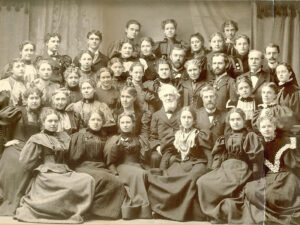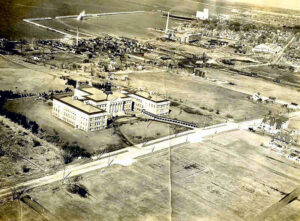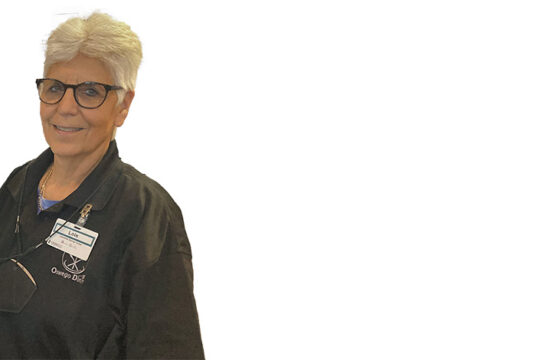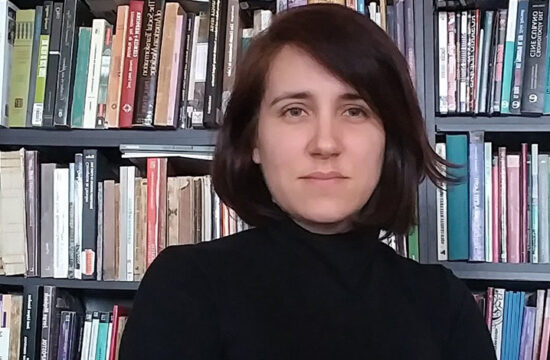This fall marks the 200th anniversary of SUNY Oswego founder Edward Austin Sheldon
By Stefan Yablonski

Edward Austin Sheldon was born into a farming family on Oct. 4, 1823. “As a boy I felt I could never live to be 21,” he said in his autobiography.
This fall marks the 200th anniversary of his birth. He didn’t set out to launch an educational revolution — let alone found a college.
His father taught occasionally and learned the shoemaking trade; but ultimately always returned to the life of a gentleman farmer.
Edward grew up partaking in, and marveling at, farm chores on the family’s land near Perry Center.
When he was unexpectedly asked to head what became the nation’s first teacher training school, he described it as “a position to which I did not aspire, and for which I seemed to myself to have no suitable qualifications.”
At school, Sheldon admittedly “hated study,” he wrote.
“I have no remembrance of having studied a moment in two years, unless it might be called studying to memorize lists of [to me] utterly meaningless words.”
He noticed the ineffectiveness of rote memorization, the prevalent method of instruction. He recalled memorizing words and pronunciations, but not necessarily gleaning meaning.
“I do not remember to have been directly taught anything or to have received criticism on anything,” he wrote.
A recent college graduate, Charles Huntington, came to Perry Center and set up a private school.
“Here for the first time I became interested in books, and began to study,” Sheldon said. “Mr. Huntington had the power to arouse enthusiasm in his pupils, and he it was who first waked me up and aroused in me new aspirations.” One day while walking down the street, Sheldon and a new friend from the school, John D. Higgins, came to a mutual agreement “that an education was the thing for which we ought to strive” and resolved to “get such an education as a college would give us.”
In 1844, Sheldon, along with cousins Stewart Sheldon and Henry Butler and Higgins were accepted into Hamilton College “in spite of our poor preparation.”
Through a former chemistry teacher, Dr. Noyes, Sheldon gained a great interest in horticulture.
Another teacher, Dr. Edward North, secured an opportunity to spend the summer with the Downing family in Newburgh. The Downings were renowned horticulturalists and authors.
J.W.P. Allen, who ran a nursery in Oswego, visited Newburgh to purchase stock. Meeting Sheldon, Allen offered an opportunity to take an interest in his business. Sheldon abandoned his studies and plans for law school and ventured to Oswego in fall 1847 for a growing enterprise.
Sheldon quickly realized the nursery venture was “a sinking ship” and “[t]he little money I had invested was quickly absorbed and I could not hope to get it back again.” Allen offered up a small block of lots in the city in recompense, which Sheldon would sell off to try to recoup his investment.
 Unsure of what to do with his life, “it came into my mind to investigate the condition of the poorer classes in the city of Oswego” in 1848, Sheldon wrote. The Oswego of the time was a boom town, as its port served as a key stop for vessels whose goods then traversed over land to an expanding United States. The need for labor attracted many unschooled workers, often immigrants and their families.
Unsure of what to do with his life, “it came into my mind to investigate the condition of the poorer classes in the city of Oswego” in 1848, Sheldon wrote. The Oswego of the time was a boom town, as its port served as a key stop for vessels whose goods then traversed over land to an expanding United States. The need for labor attracted many unschooled workers, often immigrants and their families.
What Sheldon found astounded him: “fifteen hundred persons who could neither read nor write”
With the help of a few friends and concerned citizens, Sheldon organized the “Orphan and Free School Association” on Nov. 28, 1848. The question remained of who would teach the pupils?
One of the committee’s most active members, Mrs. Fisher, said she assumed Sheldon would serve as teacher. He deferred, until Fisher said she would do nothing more with the school unless he taught.
“Nothing could ever have been farther from my thoughts than the idea of teaching school: nothing for which I considered myself so poorly adapted,” Sheldon told his sister. “But the duty seemed to lie before me, and however much I might shrink from it, there seemed to me no alternative.”
Sheldon’s life received additional uplift from his marriage to Frances A.B. Stiles on May 16, 1849. After a very simple ceremony in Syracuse, their honeymoon took them straight to Oswego.
“The effort to raise money to meet the various expenses of the school and the necessities of the poor, began to abate, and the general interest to cease,” Sheldon reported. The solution Sheldon sought was a free school system in Oswego, open to all, bringing together the 12 districts already in the city. Despite the protesting from various quarters, a committee was drafted to draw up plans and laws for discussion at a future public meeting.
Coincidental to this movement, Sheldon had a personal opportunity in the form of an offer to helm a private school at what was the United States Hotel building (later the Normal School building). Miss Bloomfield, who was running the all-girls school, planned to leave and approached Sheldon to take the reins. He decided to add boys to the roster and called on his old friend John Higgins to head up the boys’ department and Mrs. Sheldon took over some classes.
But soon the private school saw its enrollments and income drop off. Sheldon became concerned about supporting his family. He was offered the superintendent position of Syracuse’s public schools, at a salary of “six hundred dollars, which was better than the income of the private school,” Sheldon recalled. “The second year it was raised to seven hundred dollars, with fifty dollars traveling expenses additional, for visiting schools in other cities, with a view to improving those of Syracuse.” Meanwhile, the free schools movement in Oswego collapsed after a chaotic public meeting in spring 1851.
State representatives saw a need for action. After a failed first attempt, the efforts of Assemblyman DeWitt C. Littlejohn and Senator Robert C. Platt (who would also become founding board members of Oswego’s public library) succeeded in passing a bill in the state legislature in the winter of 1852-53 to create a free school system in Oswego. At the first board of education meeting on May 11, 1853, a candidate with a familiar name was, unsolicited, elected secretary of the new school, with a salary of $800 offered as incentive.
With this unexpected job offer, the choice for Sheldon was a difficult one: whether to return to Oswego to pick up a movement he started, or stay in a Syracuse system where he had accomplished much in a mere two years. Moreover, his wife grew up in Syracuse and they had set up housekeeping at her old homestead. They had made friends with teachers and the larger, thriving city offered much potential.
Yet Oswego had found a place in Sheldon’s heart. “ … I accordingly decided to return to my first love. I resigned my position in Syracuse and entered at once upon what proved to be my life-work at Oswego.”
Sheldon attempted to continue utilizing as many buildings as possible, sometimes putting different groups under the same roof.
“The most difficult task that lay before me was the weeding out of poor teachers and getting good ones in their places,” he wrote. “I knew very well that, however good my plans might be, without good teachers I could accomplish nothing.”
The search for something better took him to Toronto in fall 1859 as part of his plan to inspect places with reputations for good school systems.
“To my astonishment I found here very many of the facilities I had been wishing for,” Sheldon wrote. Many things he did not even know existed within educational institutions: pictures, object collections, colorful charts and books instructing teachers in their craft.
“I invested three hundred dollars in these pictures, objects and books, and hastened home a happier man than I went,” he recalled.
Sheldon charted a new course for his primary schools, one based on actively engaging students in the learning process. This included shorter classes based on findings that children of primary-school age “should not be kept in any one position over thirty minutes of time. Their very being demands frequent change and activity of body.”
He also suggested that children should feel as if they are as comfortable as if they were still at home, and that youngsters should be encouraged to bring dolls, toys and even pets from home. In an early form of show and tell, Sheldon suggested teachers engage the children in “many familiar, pleasant little chats” about these objects they held dear.
Given the ambitiousness of this whole new method, Sheldon said those indifferent or opposed did not receive much attention, as “the wide-awake, progressive teachers … comprised the greater number,” including some “who subsequently made their influence strongly felt in wide educational circles.”
A model school, where the teachers in training instructed students, complemented and served as a living laboratory for the small training sessions. Taking place in the Academy building, Sheldon later billed it “the first Teachers’ Training School ever organized in America.” He noted in his autobiography that such schools could later be found “in nearly every populous city, but I have yet to learn that any radical improvement has been made on the ‘Oswego Training School.’”
Having drawn a satisfactory plan, the next challenge involved finding a suitably experienced and savvy teacher to run the new Oswego Primary Teachers’ Training School. “There was no one in the country who, so far as I knew, had the necessary ideas and experiences for the running of my training school,” Sheldon said. “No such school existed in America, and the methods of instruction were quite as new as the design of the school.
So he looked overseas, contacting the Home and Colonial Training Institution in London, which he remembered as producing the materials he saw in Toronto schools. The London institution trained teachers using the principles of Swiss educator Johann Heinrich Pestalozzi, whose ideas Sheldon had embraced before he even knew Pestalozzi existed.
Margaret E.M. Jones, a teacher with the institute for 18 years, assented to run Sheldon’s school “at a salary of one thousand dollars and all living expenses.” While that seemed a hefty cost for the day, Sheldon guaranteed the board “it shall not cost the city one cent.”
But successful as he was in starting the school, and in the financial ledger, he failed to convince Jones to stay on. While she did concede working past her original year of agreement into the summer of 1862, Jones still planned to return to London, setting into motion the search for her replacement. Sheldon proposed hiring E.D. Weller, a graduate of the Albany Normal School and Senior School No. 1 principal, who had an interest in the new method. Weller, however, “hesitated about accepting it, being doubtful as to the final outcome of the experiment.”
Jones had her concerns as well – but not about the school or its founder.
Upon hearing of Sheldon’s suggestion for Weller, she approached the board and “stoutly protested, insisting that Mr. Sheldon should be made principal.” Jones proved more persuasive, and the board appointed Sheldon to a position he did not initially seek nor feel himself a worthy leader of the new, innovative institution that would eventually become known as SUNY Oswego.
(The above was condensed from data provided by Tim Nekritz, director of news and media at SUNY Oswego)












